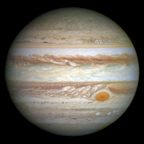Search results
If you want your eyes to receive 32000~100000lux, you need to stare at the sun in a sunny day.If you stare at the ground in a sun-exposure area, your eyes receives much less than 32000 lux. If you stare at a shedded ground in a sunny day, your eyes receive slight less than 10000lux. human eyes could not tolerate 32000lux more than 5 secounds.
Dec 26, 2014 · The same applies to the beams of light above them. The Sun is very far away and the beams are pretty much parallel, but they're pointing towards you, and perspective makes them appear to converge towards the vanishing point - which in this case is the Sun's location in the sky. The technical term for these beams is "crepuscular rays."
Apr 17, 2015 · If we assume the Sun orbits the Earth, the math says that the Sun should be much less massive than the Earth. If we assume the Earth orbits the Sun, the opposite is true. Either way we can get an estimate of the mass of the Sun. We know from other tests that the Sun is more massive than the Earth, so therefore the Earth orbits the Sun.
Apr 27, 2018 · However, the Sun will accrete $\sim 10^{42}\ \mathrm{kg\ m^2\ s^{-1}}$ of angular momentum, which is comparable to its current angular momentum. The accretion of Jupiter in this way is therefore sufficient to increase the angular momentum of the Sun by a significant amount. In the long term this will have a drastic effect on the magnetic ...
Jul 22, 2017 · It is real and observable. The larger size is caused by a refraction of light when the moon is at the horizon because the light has to pass through greater amounts of atmosphere to reach you compared to when it is overhead. The same is true of the setting sun.
Aug 27, 2015 · Incandescent light bulbs (the ones with a filament) operate similarly to the sun - they emit light because the filament heats up, and when objects heat up they emit a lot of light. If you put your hand in front of an incandescent light bulb you will feel a lot of heat, because most of the light it emits is infrared.
Feb 15, 2017 · The Sun has actually set/risen and we see it due to the way light is bent across the atmosphere. Apparently due to coincidence of the size and distance of the sun, its exactly the same size - so if we see 50% of the sun, the sun is 50% below the horizon. So, I understand all this, so here is my question :
But in Gerthsen Kneser Vogel there is an exercise where Sherlock Holmes estimated the temperature of the sun only knowing the root of the fraction of D and R. Lets say, he estimated this fraction to 225, so the square root is about 15, how does he come to 6000 K ?
Another way of calculating the earth - sun distance is to look at the centrifugal and the gravitational force. This solution assumes that one already knows the mass of the sun, but thats a different problem ;-).
Mar 10, 2020 · Now the Sun loses a small amount of mass. The Earth is still traveling at the same velocity, and requires the same centripetal force to maintain the same circular orbit. Unfortunately, the reduced mass of the Sun no longer supplies the required centripetal force. So the Earth is now in a slightly elliptical orbit, passing perihelion.



















